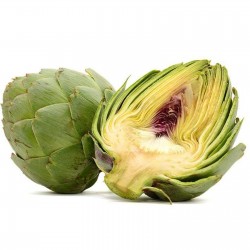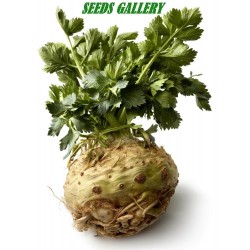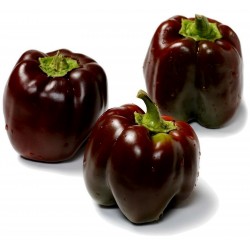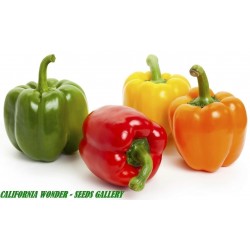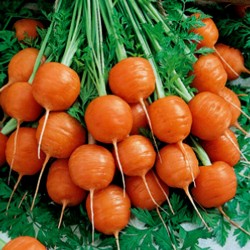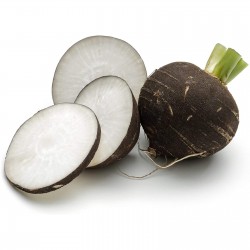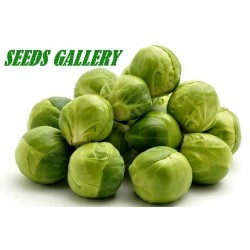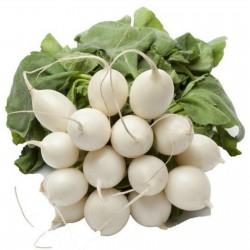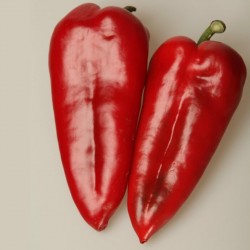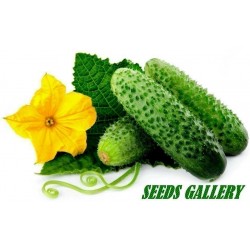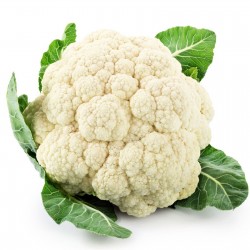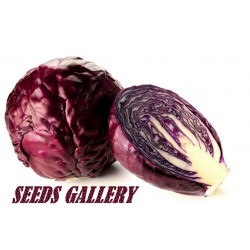Seeds Gallery Com,
5/
5
<!DOCTYPE html>
<html>
<head>
<meta http-equiv="Content-Type" content="text/html; charset=UTF-8" />
</head>
<body>
<h2><strong>Cauliflower Seeds SNOWBALL</strong></h2>
<h2><span style="color: #ff0000;"><strong>Price for Package of about 200 seeds.</strong></span></h2>
<p>Snowball Cauliflowers have a pure white smooth crisp heads weighing 2-3 lbs and are well adapted to shorter growing seasons. Cauliflower is one of several vegetables in the species Brassica oleracea, in the family Brassicaceae. It is an annual plant that reproduces by seed. Typically, only the head (the white curd) is eaten. The cauliflower head is composed of a white inflorescence meristem. Cauliflower heads resemble those in broccoli, which differs in having flower buds.</p>
<p>Its name is from Latin caulis (cabbage) and flower,. Brassica oleracea also includes cabbage, brussels sprouts, kale, broccoli, and collard greens, though they are of different cultivar groups.</p>
<p>For such a highly modified plant, cauliflower has a long history. François Pierre La Varenne employed chouxfleurs in Le cuisinier françois. They had been introduced to France from Genoa in the 16th century, and are featured in Olivier de Serres' Théâtre de l'agriculture (1600), as cauli-fiori "as the Italians call it, which are still rather rare in France; they hold an honorable place in the garden because of their delicacy",[3] but they did not commonly appear on grand tables until the time of Louis XIV.</p>
<p>Classification and identification</p>
<p>Cauliflower on display in a supermarket in Melbourne, Australia</p>
<p>Major groups</p>
<p>There are four major groups of cauliflower.</p>
<p>Italian </p>
<p>Diverse in appearance, and biennial and annual in type, this group includes white, Romanesco, various green, purple, brown and yellow cultivars. This type is the ancestral form from which the others were derived.</p>
<p>Northwest European biennial </p>
<p>Used in Europe for winter and early spring harvest, this was developed in France in the 19th century, and includes the old cultivars Roscoff and Angers.</p>
<p>Northern European annuals </p>
<p>Used in Europe and North America for summer and fall harvest, it was developed in Germany in the 18th century, and includes old cultivars Erfurt and Snowball.</p>
<p>Asian </p>
<p>A tropical cauliflower used in China and India, it was developed in India during the 19th century from the now-abandoned Cornish type,[6] and includes old varieties Early Patna and Early Benaras.</p>
<p>Varieties</p>
<p>Orange cauliflower</p>
<p>There are hundreds of historic and current commercial varieties used around the world. A comprehensive list of about 80 North American varieties is maintained at North Carolina State University.</p>
<p>Colours</p>
<p>Purple cauliflower</p>
<p>White </p>
<p>White cauliflower is the most common colour of cauliflower.</p>
<p>Orange </p>
<p>Orange cauliflower (B. oleracea L. var. botrytis) contains 25 times the level of vitamin A of white varieties. This trait came from a natural mutantfound in a cauliflower field in Canada.[8] Cultivars include 'Cheddar' and 'Orange Bouquet'.</p>
<p>Green </p>
<p>Green cauliflower, of the B. oleracea botrytis group, is sometimes called broccoflower. It is available both with the normal curd shape and a variant spiky curd called Romanesco broccoli. Both types have been commercially available in the U.S. and Europe since the early 1990s. Green-curded varieties include 'Alverda', 'Green Goddess' and 'Vorda'. Romanesco varieties include 'Minaret' and 'Veronica'.</p>
<p>Purple </p>
<p>Purple color in cauliflower is caused by the presence of the antioxidant group anthocyanins, which can also be found in red cabbage and red wine.[9] Varieties include 'Graffiti' and 'Purple Cape'. In Great Britain and southern Italy, a broccoli with tiny flower buds is sold as a vegetable under the name "purple cauliflower". It is not the same as standard cauliflower with a purple curd.</p>
<p>Cauliflower is low in fat, low in carbohydrates but high in dietary fiber, folate, water, and vitamin C, possessing a high nutritional density.</p>
<p>Cauliflower contains several phytochemicals, common in the cabbage family, that may be beneficial to human health.</p>
<p>Sulforaphane, a compound released when cauliflower is chopped or chewed, may protect against cancer.</p>
<p>Other glucosinolates</p>
<p>Carotenoids</p>
<p>Indole-3-carbinol, a chemical that enhances DNA repair, and acts as an estrogen antagonist, slowing the growth of cancer cells.</p>
<p>Boiling reduces the levels of these compounds, with losses of 20–30% after five minutes, 40–50% after ten minutes, and 75% after thirty minutes. However, other preparation methods, such as steaming, microwaving, and stir frying, have no significant effect on the compounds.</p>
<p>A high intake of cauliflower has been associated with reduced risk of aggressive prostate cancer.</p>
<p>Cooking</p>
<p>Aloo gobi, an Indian dish prepared with cauliflower and potato</p>
<p>Cauliflower can be roasted, boiled, fried, steamed or eaten raw. Steaming or microwaving better preserves anticancer compounds than boiling.[14]When cooking, the outer leaves and thick stalks are removed, leaving only the florets. The leaves are also edible, but are most often discarded.[16] The florets should be broken into similar-sized pieces so they are cooked evenly. After eight minutes of steaming, or five minutes of boiling, the florets should be soft, but not mushy (depending on size). Stirring while cooking can break the florets into smaller, uneven pieces.</p>
<p>Low carbohydrate dieters can use cauliflower as a reasonable substitute for potatoes; while they can produce a similar texture, or mouth feel, they lack the starch of potatoes.</p>
<p>Fractal dimension</p>
<p>Fractal pattern of Romanesco broccoli, a variant form of cauliflower</p>
<p>Cauliflower has been noticed by mathematicians for its distinct fractal dimension,[17][18] predicted to be about 2.8.</p>
<p>Start indoors in a warm, well-lighted area from early March through June for the earliest of crops. Sow seeds ¼" deep in good compost. Keep evenly moist. Seedlings emerge in 5-8 days at 70º F. They do best covered lightly with soil. Alternatively sow directly outside from early April.</p>
<p>Transplant seedlings outside 2-3 weeks before your last frost date. They grow best at 55º to 65º F. Do not let seedling become more that 5 weeks old because older seedlings do not mature well transplanted.</p>
<p>Set plants 18" apart in rows 24" apart. Transplant seedlings in late June through July for September through November head harvest.</p>
<p>Water deeply once a week in dry weather. Cultivate or mulch to control weeds. High fertility and abundant supply of water throughout the growing season are important.</p>
</body>
</html>
VE 21 (1g)




